Calculate Out-The-Door Price
close
Tires
You care about your car and know it’s important to have your tires rotated at regular intervals. You also know that getting this done evens out tire wear, which means better handling and traction for you. But what exactly are “regular intervals”? Learn how often you should get a tire rotation, what's typically involved in the service, and how it can save you from having to buy new tires down the road. That's more money in your pocket for the things you care about!
Most vehicle manufacturers recommend that you get your tires rotated approximately every 7,500 miles or six months.
However, some vehicles are exceptions and it’s always best to refer to your owner’s manual. This number can change depending on how, where, and what you drive. Simplify things by making it a habit to get your tires rotated every time you get your oil changed.
Tire rotation consists of switching the front and rear tires. It’s crucial to do this because the drive tires (i.e. front tires in front wheel drive vehicles) work harder than the others. If you don’t swap them out, these tires will wear down faster. By rotating your tires, you distribute the burden among all four tires and ensure they wear down evenly. Take a look at the tire rotation pattern below and you'll see! At Firestone Complete Auto Care, our expert technicians remove, swap, and remount your tires so they live longer and drive safer.
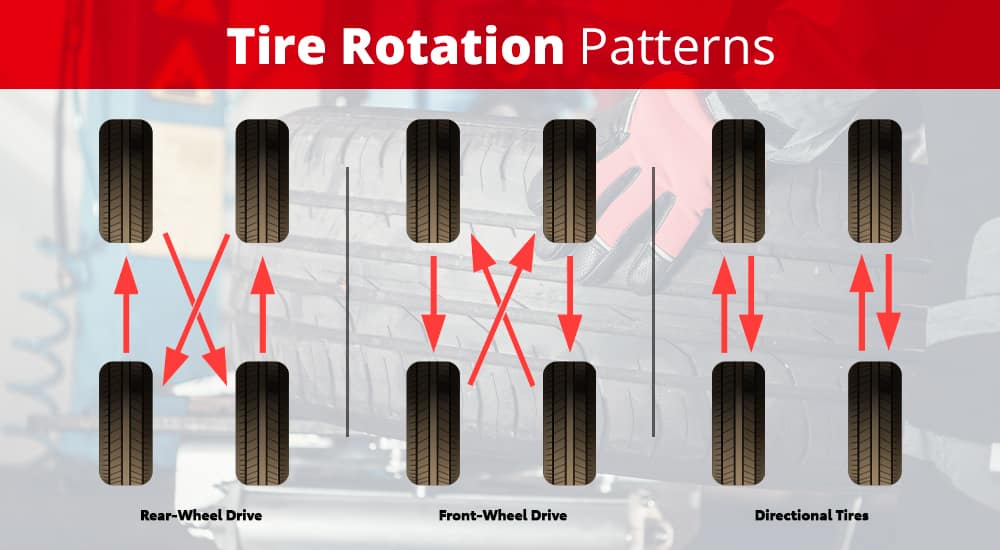
Regular tire rotations reduce your risk of various tire problems—most obviously, a tire failure or blowout. By regularly rotating your tires, you’ll be less likely to experience those, reducing your risk for an inconvenient and even potentially dangerous situation. Tire rotations also help improve traction and fuel efficiency by ensuring your vehicle's tires wear down evenly. This increases the lifespan of your tires, meaning you’ll save money in the long run.
Getting your tires rotated is key to getting the best performance from both your tires and your vehicle. If you can't remember the last time you had your tires rotated, there's a pretty good chance they're overdue for this important service. Make an appointment for a tire rotation at your local Firestone Complete Auto Care today! We’ll get you rotated and rolling in no time.
Schedule
Tires
Aug 22, 2016
Tread wear, your tires exposure to the elements, and tire age may all be contributing factors to your needing new tires. Read on to learn how to tell.
Read on to learn how to tell.
Read More
Tires
Aug 22, 2016
Firestone tires create a whole new driving experience. Learn about the technology of our tires that improves driving on straightaways and handling ability.
Read More
Tires
Aug 22, 2016
Tires are an investment & you want them to last. Here are some tire care tips to help you get the most out of your tires & info on our free inspection
Read More
LOAD 3 MORE
SHOWING 6 OF 12
Tires
Nov 20, 2017
Winter tires are your key to safe driving in the cold, but why? Stay informed to stay safe, with these 6 essential facts from Firestone Complete Auto Care.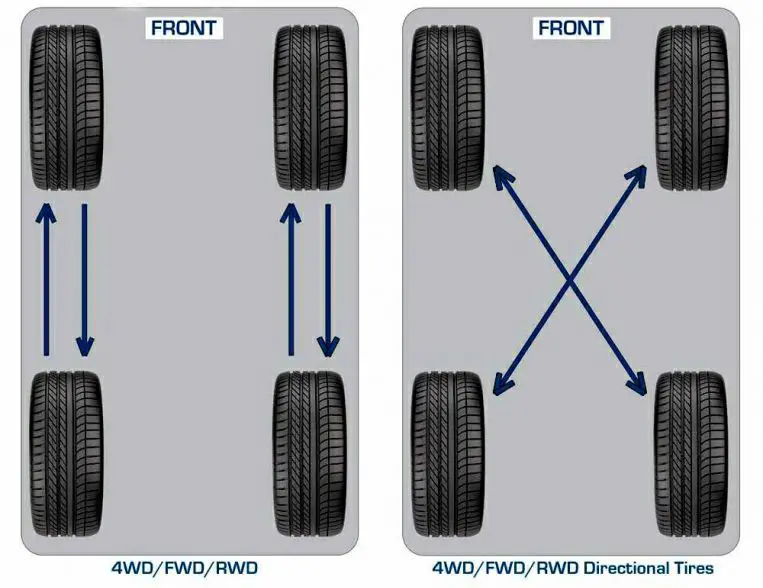
Read More
Tires
Oct 30, 2017
Here's what you need to know about changing out your tires for winter! Stay safe on the road and ahead of the winter rush with Firestone Complete Auto Care.
Read More
Tires
Oct 2, 2017
Yes, there is a right way to store tires! Help your tires live their longest life by following these easy storage steps, from Firestone Complete Auto Care.
Read More
{{storeNumber}}
{{storeName}}
{{link-icon "Call Us" mobileCallLink null "call-cta"}} {{link-icon "Directions" directions "_blank" "directions-cta"}}
{{address}}
{{city}}, {{state}} {{zip}}
{{#if activeFlag}} {{#ifCond mystore "or" myPreferredStore}} {{#ifCond storeType 'eq' "TPL"}}
*Call store for appointment {{phone}}
{{else}} {{#if onlineAppointmentActiveFlag }}
{{#if myPreferredStore}}
{{else}}
*Call store for appointment {{phone}}
{{/if}} {{/ifCond}} {{else}} {{#ifCond storeType 'eq' "TPL"}}
*Call store for appointment {{phone}}
{{else}}
Schedule Appointment {{#if onlineAppointmentActiveFlag}} {{else}}
*Call store for appointment {{phone}}
{{/if}}
{{/ifCond}} {{/ifCond}} {{else}}
*Temporarily Closed Due To: {{temporarilyClosedReason}}
{{/if}} {{#if isMilitaryStore}}
*This location is on an active US military base.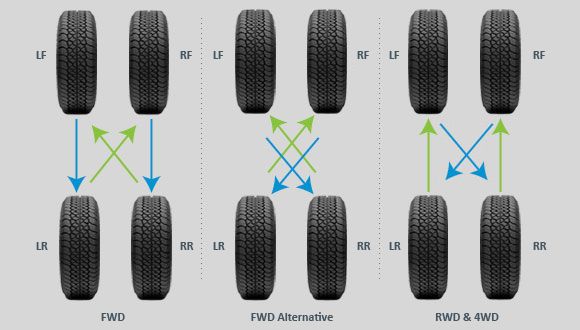 You may need military ID to access the location.
You may need military ID to access the location.
{{/if}}
{{#ifCond count 'eq' "3"}} Show More Stores {{/ifCond}}
Never skip leg day, never quit your dreams, and NEVER skip a tire rotation! Some of life's "nevers" seem pretty logical. If you're not sure if tire rotations are really necessary, you might be tempted to skip your next one. But before you cancel that service appointment, learn what could happen if you don't rotate your tires!
Tire rotation may be the most neglected of all routine maintenance tasks, but what is it? And why do vehicle manufacturers recommend it?
Tire rotation is a way of managing tire tread wear — the grating, scouring, and scraping that happens to your tires' tread while carrying your vehicle over roads and rough surfaces. During a tire rotation, each tire is moved to a different position on your car’s axles, like moving the front right tire to the back left position, for example. This shuffle helps your tires wear more evenly!
During a tire rotation, each tire is moved to a different position on your car’s axles, like moving the front right tire to the back left position, for example. This shuffle helps your tires wear more evenly!
Refer to your owner's manual or consult with your local auto care experts to understand how often you should rotate your tires. Most vehicle manufacturers recommend that you get your tires rotated about every 7,500 miles or six months.
When you follow your vehicle's manufacturer-recommended tire rotation intervals, you are supporting even tread wear, which helps improve handling, reduce noise and vibration, extend the life of the tire, and protect your tire warranty. Not only do these things save you from needing new tires sooner, they can also provide a better driving experience!
Without regular rotations, tire treads can wear down unevenly to create a rough and potentially unstable driving surface.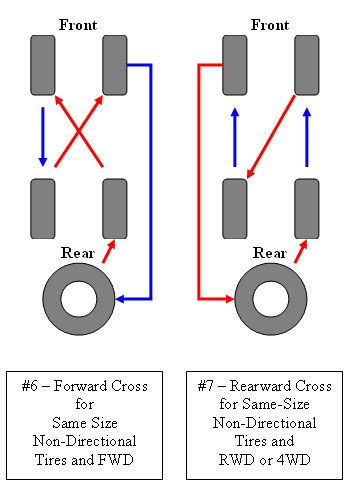 In the end, this type of tire tread wear may decrease your safety on the road – think heat buildup, hydroplaning, poor traction in snow and ice, and an increased risk of punctures and blowouts.
In the end, this type of tire tread wear may decrease your safety on the road – think heat buildup, hydroplaning, poor traction in snow and ice, and an increased risk of punctures and blowouts.
According to an NHTSA report, inadequate tread depth is responsible for more than 25% of all tire-related car accidents. Additionally, Consumer Reports found that up to 50% of all passenger vehicles currently on the road have at least one tire with insufficient tread.
When your car is moving, the friction created between the tires and the road generates heat. Tires are designed to withstand heat, but without the space for the cooling airflow that treads create, the temperatures can quickly reach unsafe levels. Too much heat can cause tire failures, such as blowouts and tread separation.
The deep grooves in healthy tread help channel water away from the driving surface, so the tire can maintain a firm grip on the road. Without adequate tread depth, tires can skim across the top of the water, dangerously compromising steering, control, and handling.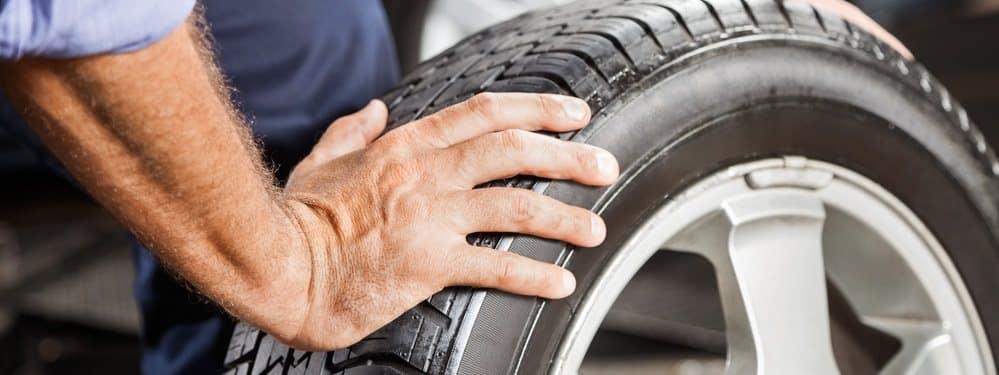
With deeper, wider, sharper, and more irregular treads, snow tires are designed to improve traction by gripping into packed snow. Driving in winter conditions with insufficient tread depths (or inadequate tires) may increase the risk of spinning out or sliding around on icy roads.
If you don't rotate your tires, a spot on a tire that is experiencing excessive strain could begin to wear thin. The thinner the spot gets, the higher the chance that a nail, glass, or even a sharp rock could poke a hole in the tire. After all, tires — like chains — are only as strong as their weakest point.
The benefits of regular tire rotation far outweigh the risks of not getting it done. While skipping it could cost you dearly, you could get your next tire rotation service for free! Call or visit your local Tires Plus and find out if your tires qualify.
Monday, October 10, 2016 13:31:16 Europe/Moscow
Car tire wear cannot run evenly : Front tires tend to wear much faster than rear tires. There are several reasons for this. So, most often the front axle of the car is loaded more than the rear (mostly it accounts for about 60% of the mass of the car). The front tires are subject to wear when maneuvering and also wear due to non-zero camber and toe settings. In addition, tire wear is not least influenced by the type of vehicle drive: the drive axle causes the tires to wear out faster. Due to the rotation (rearrangement) of the wheels, it is possible to achieve their more uniform wear and, as a result, life extension .
There are several reasons for this. So, most often the front axle of the car is loaded more than the rear (mostly it accounts for about 60% of the mass of the car). The front tires are subject to wear when maneuvering and also wear due to non-zero camber and toe settings. In addition, tire wear is not least influenced by the type of vehicle drive: the drive axle causes the tires to wear out faster. Due to the rotation (rearrangement) of the wheels, it is possible to achieve their more uniform wear and, as a result, life extension .
There is another equally obvious benefit of wheel rotation: Tires with the same tread depth provide more comfort and safety . This is especially important when it comes to difficult weather conditions. For example, the most worn tires are more prone to hydroplaning.
How to properly rotate the wheels? It is perhaps better to build on the type of tires installed on your car.
The most popular type of civilian tire tread at the moment is asymmetric . For example, most models of the MICHELIN summer line have this, ranging from the economical Energy Saver to the sporty Pilot Super Sport. When installing asymmetric tires on rims, it is necessary to align the front side of the tire with the front side of the rim : for this, the sidewalls have the inscriptions Outside and Inside (the outer and inner side of the tire) and there is no arrow for the direction of rotation. The convenience of this type of tread is that the assembled wheels can be interchanged in any way: the outside of the tire will remain the outside anyway . In this case, it is appropriate to use any of the rotation methods. Usually, the most suitable way to rearrange the wheels is indicated in the car's operating instructions, but if there is none on hand, then you can choose one of the methods we have proposed.
The front left wheel is interchanged with the rear right and the front right with the rear left. This type of replacement is suitable for any type of vehicle drive and is most preferred for all-wheel drive vehicles.
The rear wheels are moved to the front axle (the right rear wheel is replaced by the right front wheel, the left rear wheel is replaced by the left front wheel), while the front wheels are replaced by the rear wheels diagonally (the right front wheel is replaced by the left rear, left front - in place of the right rear). This method is suitable for cars with rear and all-wheel drive.
The front wheels are installed in place of the rear wheels (the right front wheel is in place of the right rear wheel, the left front wheel in place of the left rear wheel), and the rear wheels, in turn, are moved diagonally to the front axle (the right rear wheel is placed in place of the left front, left rear - in place of the right front).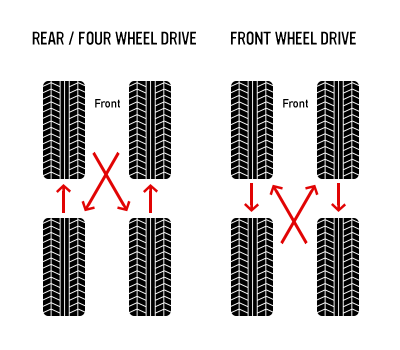 This method is for front wheel drive vehicles.
This method is for front wheel drive vehicles.
This type of tread pattern is mainly found on off-road and commercial tires. In the MICHELIN line, for example, the Agilis+ and Latitude Tour HP tire models are of this type. The rotation of tires with a symmetrical tread pattern is exactly the same as the method described above for asymmetric non-directional tires. There is only one difference in the operation of such tires: when assembling the wheels, it is not necessary to take into account the position of the outer and inner sides of the tire.
Such tires are becoming less and less common in summer tires and almost always in winter: V-shaped tread allows the most effective removal of water from the contact patch. So, in the MICHELIN model range, CrossClimate summer tires and a number of winter tires (X-Ice North 3, Latitude X-Ice 3, Alpin 5, etc.) have a directional tread pattern. Rotation with directional tires mounted on disks can be done in only one way: by swapping the front and rear wheels, i.e. the front left wheel in place of the rear left, the front right in place of the rear right.
Rotation with directional tires mounted on disks can be done in only one way: by swapping the front and rear wheels, i.e. the front left wheel in place of the rear left, the front right in place of the rear right.
As the name implies, in addition to the outer and inner side, the tire tread pattern has a directional pattern. This type of tire is used only in motorsport due to the inconvenience of use, high cost and lack of tangible benefits for civilian use. Rotation with such tires is carried out in the same way as in the case of symmetrical directional tires: the front and rear wheels of each side of the car change places with each other.
Many sports cars are sometimes fitted with different size wheels: the rear tires are usually wider and larger in diameter. If the tires have an asymmetric non-directional tread pattern, then the wheels on each of the axles can be interchanged, but if we are dealing with directional tires, then alas, the rotation of such wheels without tire fitting is impossible.
This type of rotation allows to extend the life of the wheels by about 20% , but in reality this method is almost never used: many modern cars either don’t have a spare wheel in the trunk at all, or use a small “stowaway” as it. And even if your car is equipped with a full-size spare wheel, in practice it most often differs in either tire model or wheel type. However, if the spare tire is completely identical to the wheels installed on the car, then rotation in this case can be extremely useful. For ease of changing wheels, the type of tread pattern should be either asymmetric non-directional or symmetrical non-directional. The rotation process in this case is no longer as obvious as in the previous methods.
The front right wheel is removed in place of the spare tire, the spare wheel is installed in place of the rear right wheel, the rear right in place of the front left, the front left in place of the rear left, the rear left in place of the front right.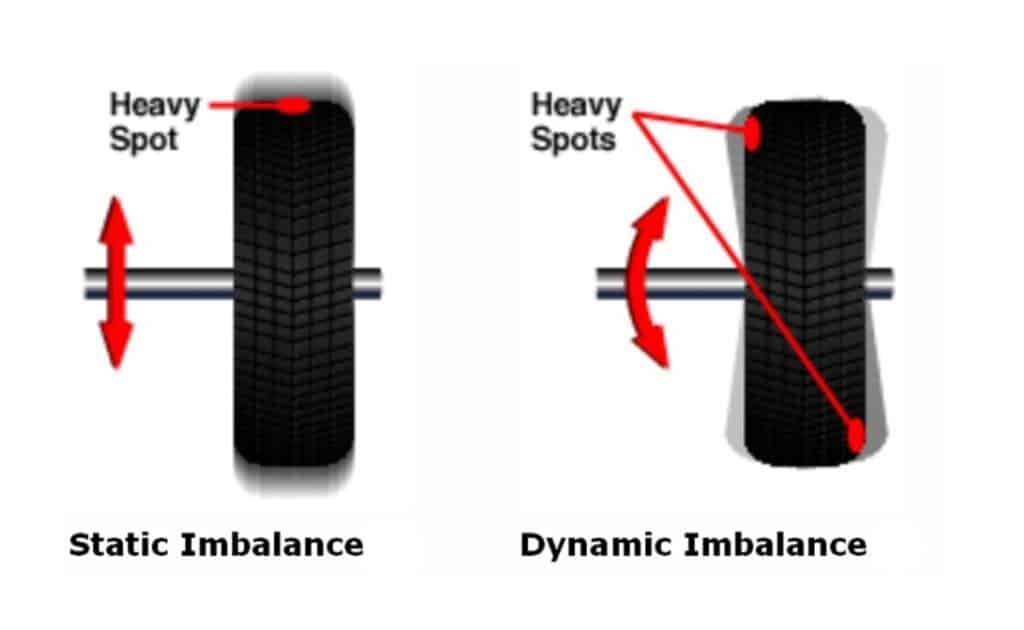
The spare wheel is installed in place of the rear right wheel, the rear right in place of the front right, the front right in place of the rear left, the rear left in place of the front left, and the front left wheel, in turn, is retracted onto spare place.
The more often you change the wheels, the more evenly the tires will wear . But, since it is quite troublesome to do this too often, experts advise changing the wheels during periodic maintenance - when the car is somehow lifted onto a lift. As a rule, mileage of 8-10 thousand km is quite enough for the next rearrangement of wheels: in such a simple way, you can not only extend the life of tires, but also keep the driving safety at the proper level.
Contents:
 ..
.. Changing wheels is like a physical exercise. Everyone knows to do it, but getting yourself to actually do it can be a challenge. While we can't really help you with fitness motivation, we have plenty of good reasons why you should swap tires every 5,000-13,000 miles.
Tire wear is inevitable when using a car. The location and extent of wear on a tire's contact patch depends on many factors, including the position of the tire on the vehicle. Keep in mind that each axle of a vehicle faces a different external force. For example, the front tires on a front wheel drive vehicle are regularly subjected to more intense stress than the rear tires. Thus, front tires on a front wheel drive vehicle typically experience accelerated wear compared to front tires on a rear or all wheel drive vehicle. Changing the wheels helps even out the wear on all four tires. If you leave the front tires uninterleaved on a front wheel drive car, they will wear out faster than the rears.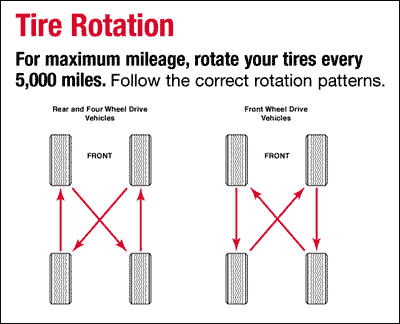 Without a proper check, you will end up with two front tires almost or completely at their maximum tread wear, and two rear tires with life remaining.
Without a proper check, you will end up with two front tires almost or completely at their maximum tread wear, and two rear tires with life remaining.
As a result, you will have to replace some tires prematurely. In some cases, while some of your tires may technically retain their remaining life, it will no longer make sense to pair them with any new tires with unworn tread. So you have to throw away not only worn tires, but also tires with remaining service life!
See also: Tire grip coefficient and factors affecting it
Summarizing all of the above, we can list the main reasons for rearranging tires in places:
Tires are absolutely essential to the efficiency and safety of a car. Keeping your tires in good condition with rotation and other simple maintenance will help keep them wearing evenly which directly affects your vehicle's stability, driving predictability and makes it easier to maneuver safely throughout the life of your tires. Tires in poor condition can cause the vehicle to vibrate.
Tires in poor condition can cause the vehicle to vibrate.
Remember: uneven tire wear can also affect the stability and handling of your vehicle. Swapping wheels is not only financially sensible, but it also helps to ensure the safety of your driving.
If tires are not rotated and maintained properly, you will likely lose not just a few hundred miles of their life, but thousands. The life of a tire can literally be cut off in the middle if you do not follow the rules for their alternation and do not take other necessary measures for their maintenance.
Tire manufacturers know that rotation is essential to realizing their full tire life. Tire mileage guarantees are most often set by tire manufacturers based on tire rotation. So if you never rotate tires and experience premature tire wear as a result, the manufacturer is unlikely to honor your warranty. In other words, you'll be left on your own with a prematurely worn set of tires and a much more expensive replacement bill.
In other words, you'll be left on your own with a prematurely worn set of tires and a much more expensive replacement bill.
See also: Inflating tires with nitrogen - the pros and cons. What does filling tires with nitrogen give?
The good news is it's inexpensive. That small investment comes back to you in the form of long tire life and sustained vehicle safety and performance. In the long run, the cost of periodic tire rotation will be only a fraction of the amount you have to spend on buying new tires due to premature tire wear. It is also not uncommon for tire shops to offer discounted tire rotation services for regular customers, or from time to time offer to do it for free. So contact the tire shop that installed your tires first - in some cases, your tire rotation costs may be zero.
Helpful Hint: don't forget to label the wheels with the numbers and keep the tire rotation data and receipts. If you ever need to change tires under warranty, having these records will increase your chances of success.
If you ever need to change tires under warranty, having these records will increase your chances of success.
Are you used to doing everything yourself? Then you can rearrange the tires. If you can safely lift the car and remove the wheels, you can change the tires in your garage or on your driveway. In addition to the rearrangement pattern, you need to consider whether your tires are directional or non-directional, symmetrical or asymmetrical, and whether the tire pattern is staggered or square. If you are not sure about at least one of these points, it is better to entrust the work to a professional. Also consider that it is a smart move to put your tires in the hands of a competent professional from time to time. Tire specialists monitor their potential problems, identify misalignment and other issues that can affect tire condition/wear and vehicle performance.
For non-directional tires of the same size, you can use the diagonal swap pattern or move the front tires to the rear diagonal corner and the rear tires forward on the same side.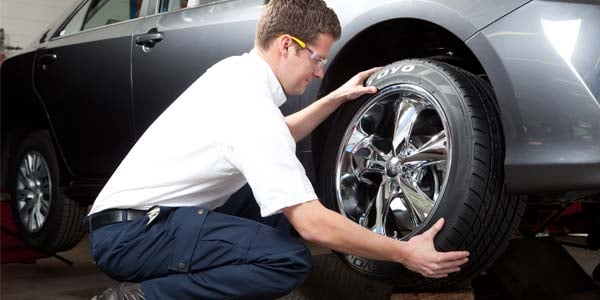
Also, due to the availability of modern tires, there is a need for 2 more rotation schemes:
Most modern cars are equipped with "stowaways" - this is not a full-size spare wheel, designed to temporarily replace a full-fledged wheel in order to somehow get to the nearest tire service. If you have a full-size spare tire, it should also be included in the swap plan.
If you have a full-size spare tire, it should also be included in the swap plan.
Tire Change Chart for RWD and 4WD Vehicles with Spare Tire Vehicles with dual rear wheels and non-directional tires may use one of the following rotation patterns:
Winter and studded tires also need to be rearranged so that they serve for a long time and behave adequately on the road.